NOVEMBER 2019 ENEWS
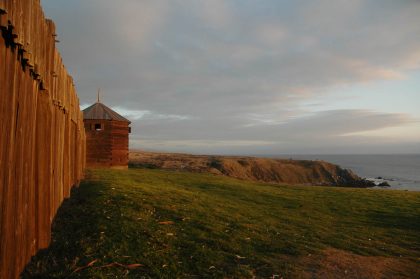
Dear friends of Salt Point and Fort Ross,
As the sunlight dwindles and the weather turns cool many of us contemplate the year that is drawing to a close, and this year it’s not only the calendar that encourages us to pause and reflect. The Kincade Fire was devastating but would have been so much worse were it not for the strength, bravery, and perseverance of local firefighters. Fort Ross was closed for a week and many of our staff were required to evacuate. The uncertainty, and the loss of basic infrastructure - power and internet - was tremendously stressful! With all the uncertainly, we were relieved to know that our local firehouses at Timber Cove and Fort Ross were on it, clearing downed trees, watching for new fires (the winds were other-worldly!), and monitoring the progress of the Kincade fire. In the end the firefighters were able to keep the fire from moving west. We owe a debt of gratitude to our local fire stations and to all first and second responders. Thank you!
We are already making new plans for the new year, but we’ve still got one event on the horizon -- our annual Holiday Potluck on Saturday, December 14th. We love spending the afternoon with our neighbors and friends, doing what we all do best - listening to music, chatting, and sharing a meal. It’s our time to look back on the year and applaud the dedication of our many volunteers, our wider community, and hopefully a firefighter or two. We’d love to have you join us!
May you find the people in your life to illuminate these ever-shortening days. And may the rains arrive soon!
Sarah Sweedler
Fort Ross Conservancy CEO
PS: If you support FRC’s work-- stewarding public lands, offering meaningful and accessible outdoor programming, and sharing the love of Fort Ross and Salt Point through newsletters like this, we hope you’ll consider making a donation today.
Putting Fort Ross Back Together
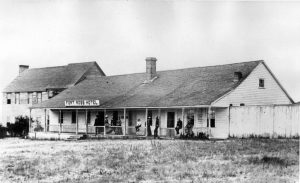
One of the many tasks Fort Ross Conservancy has taken on over the last decade is to connect with more park visitors through social media. We post interesting stories & beauty shots to Twitter, Facebook, Instagram, and beyond, to spread the word and encourage visitorship. The neat thing about Trip Advisor is visitors can post reviews, and many reviews sing our praises. That’s all good. But some visitors write about how “Fort Ross is a re-construction” in such a way that it sounds like the fort compound was rebuilt based on some old plans someone discovered--bottom up, like some sort of theme park. The reality is more interesting, and more organic.
The Russian American Company arrived in 1812, negotiated with the native Kashia tribe, and began constructing the fort compound that we are familiar with. From 1812 through 1842 Settlement Ross was a bustling village, with dozens of structures and neighborhoods outside the fort compound-- Kashia and Alaska Native villages, blacksmiths and banyas, wooden cabins, and more. Unfortunately the Russian-era structures outside the compound did not survive the passage of time.

However, inside the fort compound structures persisted in one form or another because they were of use to the ranch era settlers that followed. Certainly the buildings in the compound decayed - they rotted, got eaten by termites, and were knocked down in large pieces by earthquakes. Some were physically moved -- it is thought that one room in the Call House was relocated from the compound and attached to the Call House during the Ranch era!
The compound buildings survived because they were re-purposed: The Rotchev House evolved into the Fort Ross Hotel complete with a second story and wrap-around porch. (See photo. There was a saloon!) Blockhouses were used for storage. Structures that fell down were redesigned and rebuilt as needed.

If a reconstruction is the process of putting something back together, the problem lies with deciding at what point in time you select to re-create. But it’s not as if many of the buildings were never not there. Fort Ross was set aside in 1906 because of its unique Russian-ness, which meant that over time California State Parks removed the Americana-inspired ranch era additions and restored the Russian architecture. The Rotchev House, the most “original” structure in the compound, lost its American porch so that we may better see its original Russian-era joinery and log walls. The Fort Ross chapel caught fire more than once and its roof collapsed during the 1906 big one, but you can clearly see a few massive and likely original planks in the flooring.
To misquote Gertrude Stein, there was always a there there.
For a more thorough visual journey through Fort Ross’ history, I can (somewhat shamelessly) recommend Arcadia’s “Fort Ross and the Sonoma Coast.”
Sarah Sweedler, Fort Ross Conservancy CEO
Bathing the Old-Fashioned Way

At Fort Ross State Historic Park and the greater Sonoma County area, recent fires, evacuations and power outages have provided substantial fuel for thought about what we can be thankful for this holiday season. When the power goes out, many of the simple day-to-day conveniences we take for granted begin to feel like indulgences. For example, being able to turn on the faucet and slip into a nice hot bath or shower with ease can feel like a luxury, once you’ve had to go without for a week. However, it wasn’t that long ago that hot baths were not so readily available. During the Fort Ross Ranch era, preparing a hot bath required a lot of work.
If you visit the Park during the first full weekend of the month, you can take a guided tour of the Call family residence built by George Washington Call in 1878. A walk through the house provides visitors a glimpse of how people lived--and bathed--before the days of indoor plumbing, electricity and bathrooms as we know them today. The house still has many items that originally belonged to the Call family, including the tin basin in the children’s bedroom. The basin which was used for bathing is completely portable--there are no hookups. Filling up the bath had to be done manually, and if you wanted to take a hot bath the water had to be heated first.


The Calls had a wood-burning stove in their kitchen which could be used for this purpose. In addition to heating up water, the cook used the stove to prepare all the meals for the large Call family (George, wife Mercedes, and their nine children). Wood had to be regularly gathered, dried and chopped into pieces that were just the right size. There was a large tank situated above the wood-stove which could be used to heat water. You can still see the stove today, but the tank is no longer there.
Water could also be heated in smaller batches in a kettle on the stove. Then after the water was nice and hot, it was carried by hand to the tin bath, one kettleful at a time. With all this work to get a bath set up, it sounds like bathing was more of a chore than a relaxing way to unwind. Not to mention, from the looks of it bathing in a tin basin was not the comfortable experience that a modern-day bathtub provides.
So while we’re getting spruced up for the holidays this season, we can take a moment to be thankful for our modern conveniences, such as the ease in which we can take a nice hot shower or bath with a mere turn of the faucet. Oh, and we haven’t even begun to discuss the chamber pot! If you’d like to explore the Call House museum and the days before indoor plumbing and electrified homes, we’d love to give you a guided tour during our next open weekend on December 7th-8th, 2019.
References & Recommendations:
Call House Virtual Tour with Lynn Rudy
My Life at Fort Ross 1877-1907 by Laura Call Carr
The Old Salt Point Township and The Old Salt Point Township II: Ranch Era Settlers by local author, Ranch era historian, and Call House Volunteer Lynn Hay Rudy
--Charon Vilnai, Programs Instructor, Sea Lion Survey Project Lead, and Call House Museum Lead
Environmental Literacy: Turning the Tide of Global Climate Change by Song K Hunter
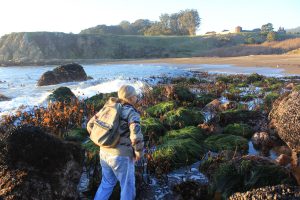
“Let’s go tide-pooling!” she exclaimed, with a look of pure joy on her face and twinkle of excitement in her eyes. How could I resist? By 4:50 p.m., we were out in our surf booties, bundled up against the frigid January evening, ready to see the best of the -1.11 California King Tide at 5:35 p.m. My enthusiastic guide was my dear friend and neighbor, Susanna Barlow. We were on the hunt to observe and photograph the newly-exposed creatures as the tide receded. I followed along as she slipped over green and gold seaweed covered rocks like some sort of mollusk, never minding as the waves splashed, then doused her. Mesmerized by the beauty around me, I soon found myself fifty feet out and in a foreign land.
As the sun set behind us, flags of Southern Stiff-stiped Kelp danced like Dr. Seuss characters all around us. Absolutely everywhere, creatures of every conceivable shape, size and texture were going about their lives, with no concept of how they would change mine. Walking through the cold sand in the last light of day, I knew I’d experienced something profound.
 As we spend time in nature, we gain an understanding and appreciation for the natural environment and our place in it. Through this informal education, we learn a language called environmental literacy. If you are one of the lucky few to find your life’s work, there was most likely an incredible moment when you realized what this was. That moment happened for me on January 21, 2015. On that day, my eyes were opened to the magical world at the sea’s edge. This experience captured my heart, left me in awe and brought about the knowledge that if I offer similar experiences as the one given to me—continuing to spread the importance of environmental literacy—together we can create the next generation of ocean stewards who will save the planet from the devastating effects of global climate change.
As we spend time in nature, we gain an understanding and appreciation for the natural environment and our place in it. Through this informal education, we learn a language called environmental literacy. If you are one of the lucky few to find your life’s work, there was most likely an incredible moment when you realized what this was. That moment happened for me on January 21, 2015. On that day, my eyes were opened to the magical world at the sea’s edge. This experience captured my heart, left me in awe and brought about the knowledge that if I offer similar experiences as the one given to me—continuing to spread the importance of environmental literacy—together we can create the next generation of ocean stewards who will save the planet from the devastating effects of global climate change.
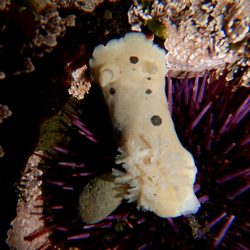
All the days surrounding the two King Tides that winter, Susanna and I went out. We would see dozens of new species each time. She taught me how they interacted, who was prey and predator, what the plant eaters grazed upon, and why certain species of nudibranch were the colors they were. She taught me that Giant Green Anemones are green because of the symbiotic algae that live inside their cells, that chitons were creatures straight from the time of dinosaurs, that Red Abalone will rear up and snatch at a piece of algae when it’s dangled in front of their mouths! On each blade of seaweed or under every rock was a new treasure. I was hooked. This world was simply just too extraordinary not to learn and share!
Through a combination of timing, circumstances, and possibly even a touch of stars aligning, I found myself in the perfect place to share environmental literacy. I had just started as manager and instructor of the Marine Ecology Program (MEP) at the Fort Ross Conservancy, an outdoor youth education program, based on marine mammal monitoring. Setting kids up with binoculars, a field journal, survey sheets and a spotting scope, we expose youth to what a profession in the field of marine biology might be like. Perched on the bluff edges, battling 25 mph winds, we set up our station to observe, count, and identify all the pinnipeds. This is a ridiculously difficult task, even for a well trained, experienced surveyor! Sea lions tend to lay in mass heaps on their haulouts, their bodies barely distinguishable from one another. During surveys, we encourage participants to use all their senses while monitoring. What do they not only see, but smell, hear, feel? We record the pinnipeds’ behavior, note any human disturbances, and count each species.
Since our MEP already had a well established marine mammal lesson, I started developing a rocky intertidal lesson. Through this process, I researched each species I discovered in the tidepools, and learned how each play an essential role in the health of this delicate habitat. With a loss of just one of these species, the threads connecting that healthy immune system of the intertidal zone could fall apart.

By watching the tides come in and out in the intertidal, exposing, then recovering the pools we’d just been exploring, we learned what to expect with each visit and immediately notice when something is off or a new species was present. With a greater depth of knowledge comes a clearer understanding of how vast and terribly complicated this web of species and systems is which encompasses the entire planet. They are all dependent on each other to continue to remain thriving, healthy, sustainable populations.
Since that magical day nearly five years ago, I have continued to immerse myself in the ocean community in myriad ways. Between visiting tidepools to photograph and identify species by uploading my photos to iNaturalist, to surveying our resident Harbor Seal and Sea Lion marine mammals, as well as sea and land birds along our stretch of coast for NOAA’s Beach Watch program. Most recently, I’ve taken the biggest step to date by re-enrolling in college after ten years away, to finally complete my degree in marine biology.
All it took was a passionate naturalist with a brilliant knack for environmental literacy to expose me to my life’s work. As a dear friend once said to me: with Susanna as my guide I was given new eyes, a new perspective on something I’d seen a thousand times before, but never fully appreciated for what it was. She gave me the vocabulary to name and understand it.
For many students who come to Fort Ross for an MEP, our trip together is their first time to any beach. With every gasp and shriek of delight, they forget their worries, fears, and resistance. That stunning seascape pulls one in as much as an Alice in Wonderland scene. They almost always lose themselves, becoming kids at heart again with the pure joy of it, and each time I relive my own foray into the intertidal zone.
We have learned that human activities such as overhunting, pollution and global warming threaten the very existence of this delicate world. Climate change is the most significant threat to the planet and the key to halting the effects of global warming is environmental literacy because people protect what they know, understand, and care for. Just as Susanna was my guide, it’s now my turn to shepherd others into the world I love and care about so much. Through passionate interpretation of the content and sharing the sheer beauty and mystery of it all, environmental literacy instructors may just grow the next generation of ocean stewards, and in so doing, preserve the health of our oceans.
Community Potluck at Fort Ross Auditorium Saturday, December 14: 12 - 3pm
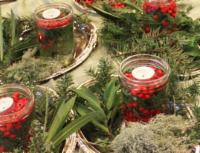
We invite our friends, members, and local community to join us on December 14th at 12pm for our annual holiday party. FRC will bring a few hearty main dishes to share. Please bring a side, salad, or dessert for the table.
Questions? Email Sarjan Holt at sarjanh@fortross.org or call 707/847-3437.
Join and Support Fort Ross Conservancy
Did you enjoy this newsletter? Would you help us continue our work supporting Fort Ross and Salt Point Parks, including the year-round outdoor education programming and interpretation we provide to our visitors? We are a member organization and we rely on our community to keep us going. Please consider making a donation to Fort Ross Conservancy today!
Download FRC Membership Brochure
Sign up for Fort Ross and Salt Point E-news
You can help support Fort Ross in several ways:
Become a member of Fort Ross Conservancy.
- Your membership promotes stewardship of Fort Ross and Salt Point parks. Benefits of membership and annual renewals are our monthly electronic newsletters and 10% discount on purchases (including mail orders) at the Visitor Center Bookshop.You can join by mailing the membership brochure to us via USPS, online with PayPal, or call us to use your credit card.
- Volunteer At Fort Ross– Volunteering provides a great way to meet new people, fulfill community service hours, and get outside to enjoy our public lands. We have many opportunities for all ages and interests.
- Make A Donation To Fort Ross Conservancy – Donating to Fort Ross Conservancy allows us to continue our work of promoting and protecting Fort Ross State Historic Park and Salt Point Park. We have many projects that need funding in order to succeed. You can donate online, or by sending us a check via USPS.
Questions? Email Sarjan Holt at sarjanh@fortross.org or call 707/847-3437.